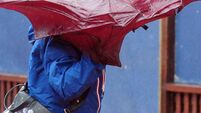Meet the guardians of the country's DNA
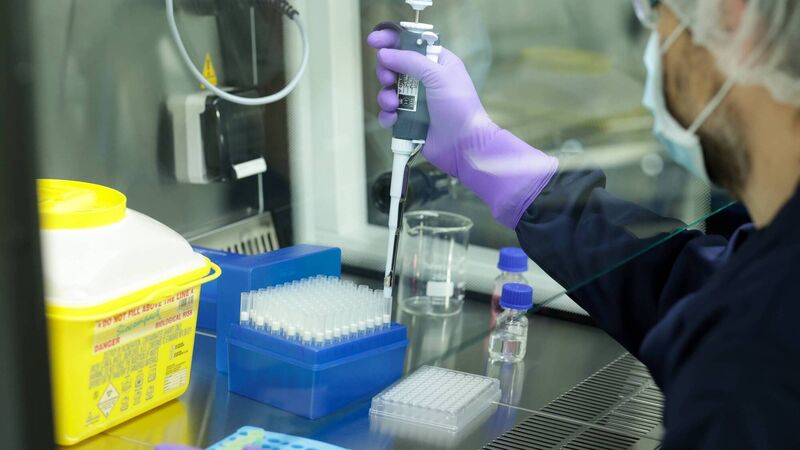
DNA, the building blocks of all genetic life, is the chief purpose of FSI’s new €100m campus at Backweston in Co Kildare, just beyond the Dublin City limits. Pictires: Maxwells Dublin
The three-storey laboratory building may have FSI (Forensic Science Ireland) written on it, but the acronym that drives some of the most stringent security measures you’ll see in Ireland isn’t FSI, it’s DNA.
DNA, the building blocks of all genetic life, is the chief purpose of FSI’s new €100m campus at Backweston in Co Kildare, just beyond the Dublin City limits.
Put another way, the preservation of DNA makes Backweston a uniquely designed building.
From the outside, the laboratory looks like the type of research centre you might see in a paranoid 1970s science fiction thriller — all pristine concrete and right angles.
Inside however, it is both a beautiful building, and a construction without edges. That means no skirting boards, pressurised rooms.
The laboratory parts — much of which are still covered in bubble wrap — look more akin to a hospital than anything. That is because of DNA. A brittle substance, easily contaminated by outside agents.
Everything at Backweston is designed with the preservation of DNA in mind.
The media’s visit to to the facility is itself a unique event. Three days later, the building is to receive a critical clean. In the aftermath of that, there will be no visitors whatsoever, for fear of corrupting the samples on site.
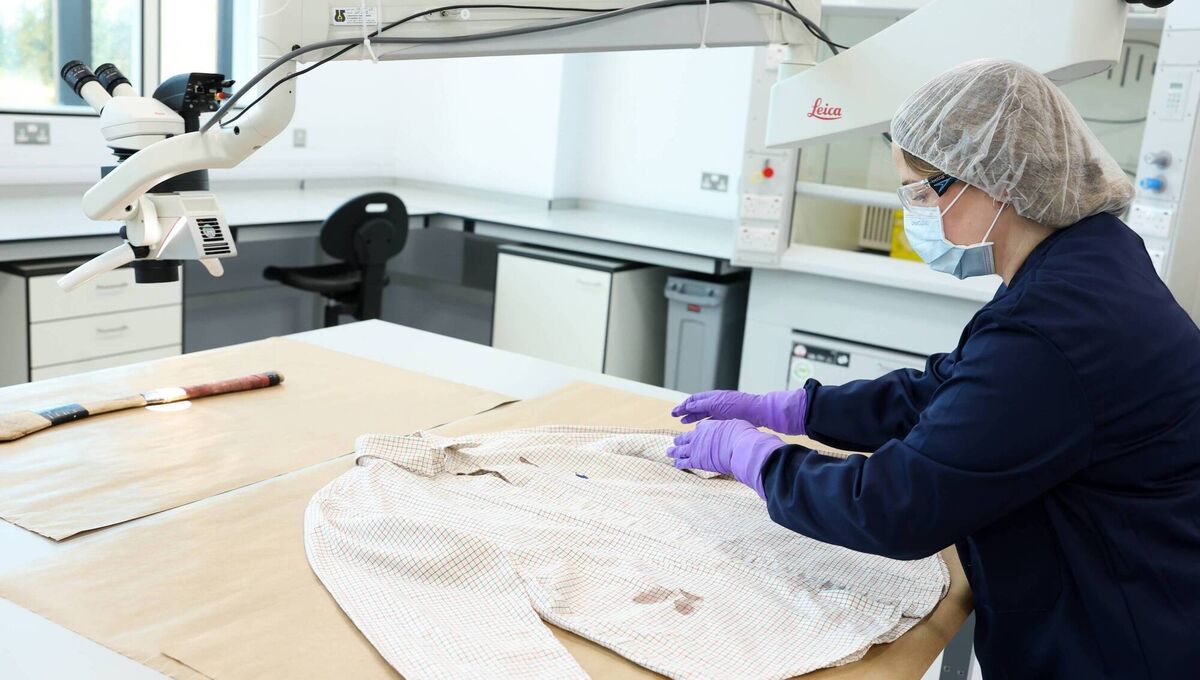
Access within the complex is by fingerprint-scan, and all visitors have to provide a DNA sample of their own.
It is an exclusionary strategy, so that the samples in question can immediately be discounted when analysing case samples.
Still, it is a little unnerving to give such a sample, particularly given the profile extracted will be kept on file for 10 years.
When FSI, a body subordinate to the Department of Justice, was first conceived in the 1970s DNA wasn’t even a thing.
These days it is of critical importance to investigations — think of how crucial the substance was to the conviction of Jozef Puska for the murder of teacher Ashling Murphy for example.
Without it, there would have been nothing to tie Puska to the scene of the crime.
A positive DNA match on the other hand has about a one in 1bn chance of being wrong.
There are six teams in the DNA section — with one of them dedicated to Ireland’s missing and unidentified persons.
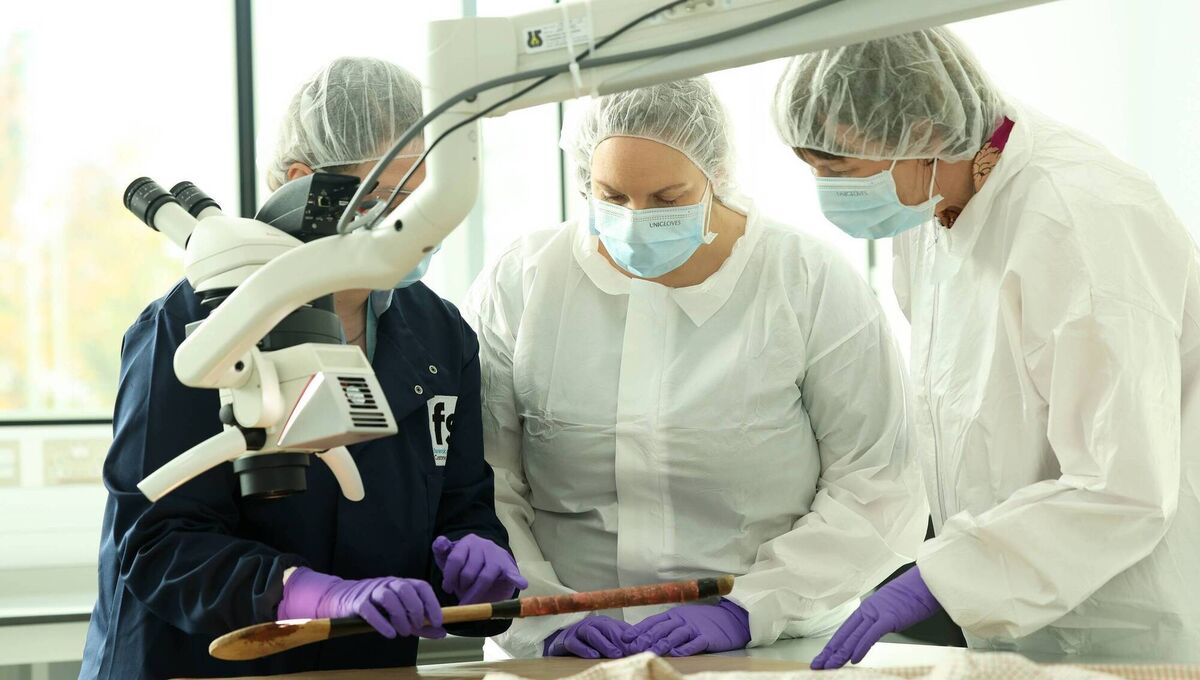
That team has successfully identified 90 people in seven years from what would otherwise have been unrecognised human remains — a hit rate of about one a month, a fact Dr Geraldine O’Donnell, the facility’s director of DNA, says FSI is “very proud” of.
From its inception nearly 50 years ago up until the present, the forensics team was based at Garda HQ in Phoenix Park.
The day we visited Backweston was staffed by a skeleton complement — with the remainder back in Dublin.
There will be 100 in place at the new facility by the end of they year, with the remaining 111 arriving by next summer.
The difference in standards of the two buildings are indescribable, according to Dr O’Donnell.
“It’s a huge upgrade from the past, I can’t tell you how different it is,” she says.
“We have the highest standards of containment here, and the rooms are all pressurised which was never the case at Garda HQ.”
“DNA is very tricky, we have to be sure there is none from elsewhere in the lab,” she adds.
- Different tissue samples deliver different challenges for analysis — semen for instance is much more difficult to get a sample from than a bloodstain, according to FSI’s DNA scientists.
- A profile can be produced at Backweston both manually and automatically — the former is generally done in cases where there is just one chance to get a sample and a human touch is required, as opposed to a crime scene where samples are plentiful.
- It takes a little over 24 hours to extract DNA from a sample and then produce a profile.
- There are about 70,000 people on Ireland’s criminal DNA database — Backweston handles all those personal samples too.
- The database, first introduced in 2014, has a hit rate of about one in two for samples from crime scenes. So it’s paying its way.
All crime scene DNA analysis is done on the first floor at Backweston, with personal samples for the national database handled downstairs (the third floor is only used for plant works and storage).
Downstairs is also where Ireland’s other noteworthy criminal database comes into play — the 2m fingerprint samples of individuals used for matches against evidence from crime scenes, and processed by FSI’s physical evidence — think fingerprinting, documents, and handwriting
— section.
“They bring us in anything from car bumpers to doors,” says Dr Shane O’Connell from the fingerprint team, which deals with about 5,000 samples in a year.
He’s leaning over a fluorescent green blown-up image of a single print on a sheet of paper.
At that size, the individual markers of the print are easy to see, even for the layperson.
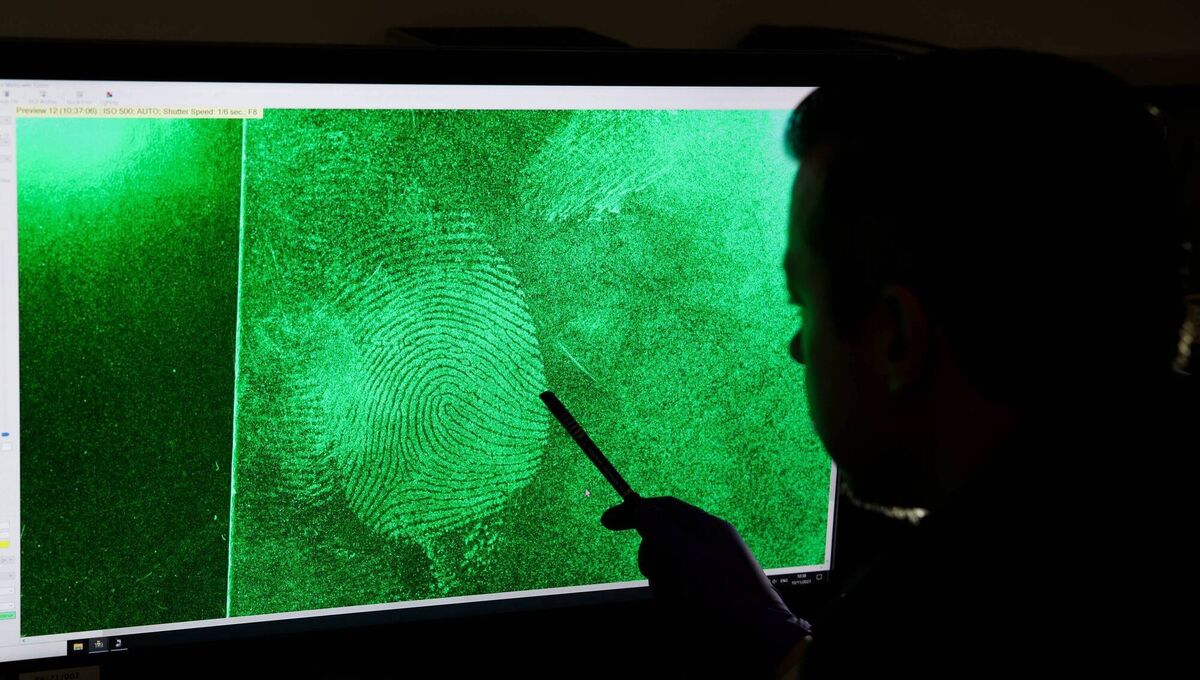
“Drugs packaging are generally the most common internal sample, but we get lots of notes sent to politicians and things like that also.”
It generally only takes a couple of hours to match a print, Dr O’Connell says.
“Prints are very fast and cost effective. It’s a complement to DNA,” he says.
The final section of the laboratory on the ground floor is the chemical analysis labs — where seized drugs and other controlled substances and their levels of purity get identified for the most part.
This section handles about 10,000 samples per year — cocaine and cannabis being by far the two most prevalent substances.
New drugs are the challenge here.
From 2019 that meant edibles, jellies and cannabinoids. Next will probably be fentanyl, Dr Yvonne Kavanagh, head of the section, says.
Fentanyl isn’t a problem yet here the same way it is in the US.
“We haven’t detected any to date,” says Dr Kavanagh. “But we’re analytically prepared for it.”
Staffing a place like FSI is actually quite difficult, given the level of expertise required and the disparity between what experts can earn in the private sector.
“It’s a really competitive labour market,” admits Chris Enright, FSI’s director general.
“We advertise broadly but we probably need to do it more often.
“The work is fascinating though, and this building will help.”










